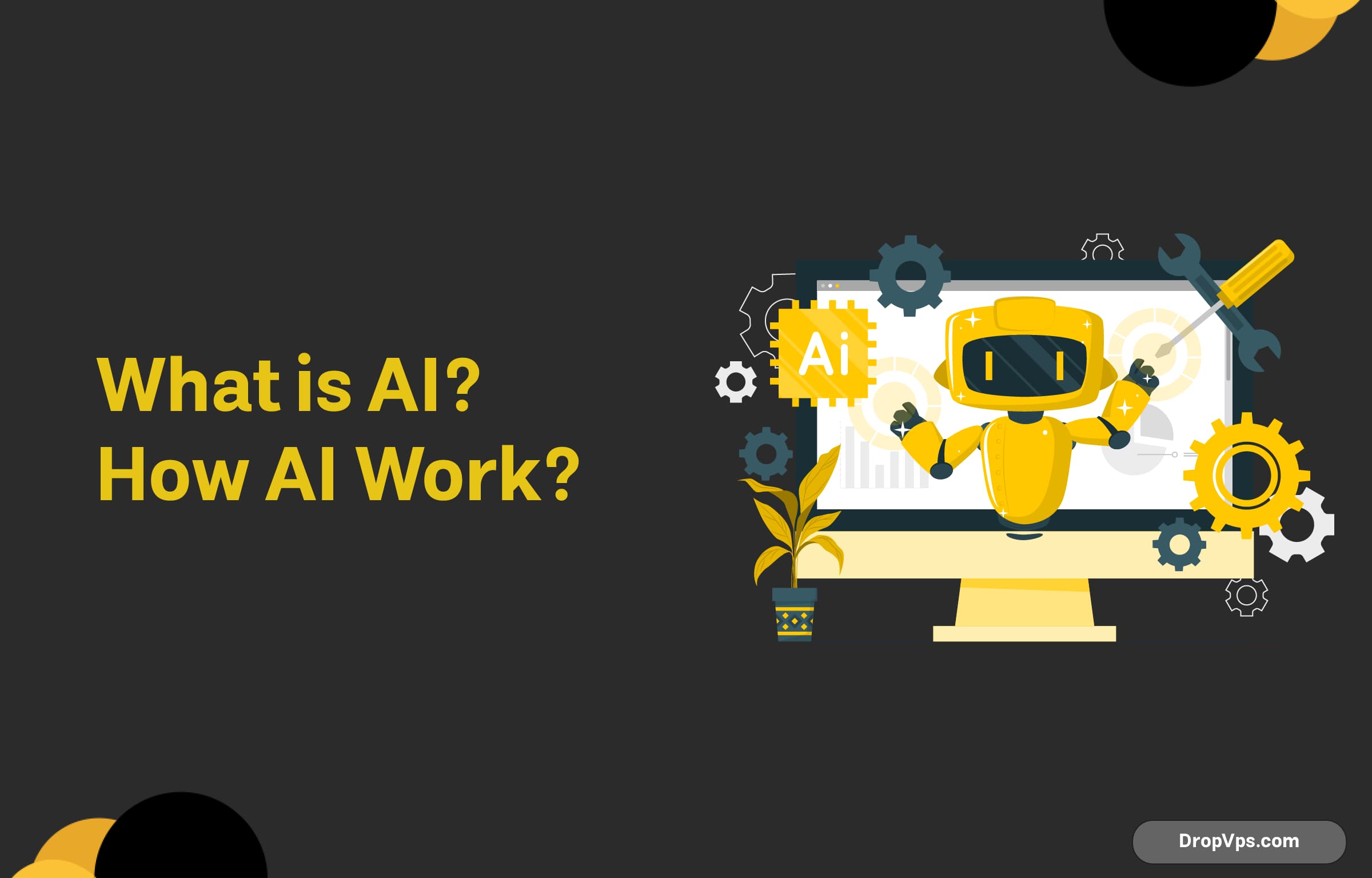DropVPS Team
Writer: Cooper Reagan
What is AI?How Does AI Work?

Table of Contents
What you will read?
Artificial Intelligence (AI) is a term that’s frequently tossed around in today’s tech-driven world, but what does it really mean? For those who aren’t tech-savvy, the concept can seem daunting. In this article, we’ll break down AI into simple, digestible chunks, making it easier for anyone to understand.
What is AI?
At its core, AI refers to the ability of a machine to mimic human intelligence. This includes learning, reasoning, problem-solving, perception, and language understanding. Think of it as teaching a computer to think and act like a human.
Everyday Examples of AI
To make AI relatable, let’s consider some everyday applications:
-
Voice Assistants: Devices like Siri, Alexa, and Google Assistant use AI to understand and respond to your voice commands. When you ask, “What’s the weather today?” these assistants process your request, search for the information, and deliver a response.
-
Recommendation Systems: Ever noticed how Netflix suggests shows you might like? That’s AI at work! It analyzes your viewing habits and compares them to others to recommend content tailored to your tastes.
-
Chatbots: Many websites use AI-powered chatbots to assist visitors. When you chat with a support bot to resolve an issue, it uses AI algorithms to understand your query and provide relevant answers.
How Does AI Work?
To grasp how AI functions, let’s dive into some basic concepts without getting too technical.
-
Data Input: AI learns from data. The more data it has, the better it can make predictions or decisions. For instance, if you train an AI model with photos of cats and dogs, it will learn to distinguish between the two based on patterns.
-
Algorithms: These are sets of rules or instructions that AI uses to process data. For example, a simple algorithm might categorize images based on color and shape.
-
Machine Learning: This is a subset of AI where machines learn from data without being explicitly programmed. Using algorithms, a machine can analyze data and improve its performance over time.
Here’s a simple example in Python code to illustrate a basic machine learning concept:
from sklearn import datasets
from sklearn.model_selection import train_test_split
from sklearn.ensemble import RandomForestClassifier
# Load dataset
iris = datasets.load_iris()
X = iris.data
y = iris.target
# Split data into training and testing sets
X_train, X_test, y_train, y_test = train_test_split(X, y, test_size=0.2)
# Create and train the model
model = RandomForestClassifier()
model.fit(X_train, y_train)
# Make predictions
predictions = model.predict(X_test)
print(predictions)This code snippet demonstrates how we can train a machine learning model using the famous Iris dataset to classify different species of iris flowers based on their features.
Types of AI
AI can be broadly categorized into two types:
-
Narrow AI: This is AI designed for a specific task, such as facial recognition or language translation. Most AI applications today fall into this category.
-
General AI: This type of AI would possess the ability to perform any intellectual task that a human can do. While it remains largely theoretical, it’s a goal for many AI researchers.
The Impact of AI
AI is transforming industries, from healthcare to finance. In healthcare, AI algorithms can analyze medical images to detect diseases early. In finance, AI-driven algorithms assess risks and detect fraudulent transactions faster than human analysts.
As AI continues to evolve, its potential seems limitless. The key takeaway is that AI is not just a futuristic concept but a present-day reality that impacts our lives in various ways.
Conclusion
Understanding AI doesn’t have to be complicated. By relating it to everyday experiences and breaking down its components, anyone can grasp the essentials of artificial intelligence. As AI technology continues to advance, fostering a basic understanding will empower individuals to engage with this exciting field confidently. For more insights on technology, cloud services, and how AI can benefit your business, stay tuned to our blog at DropVPS.com!